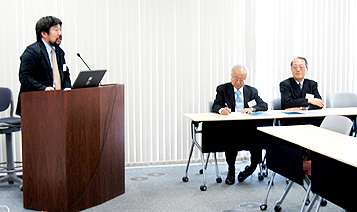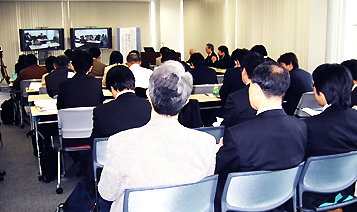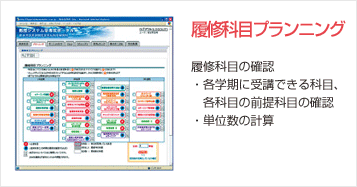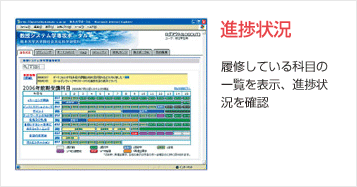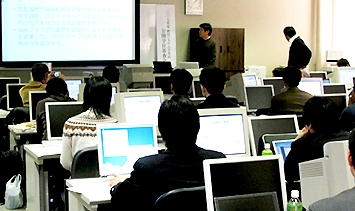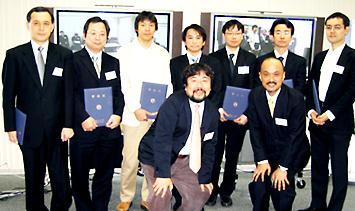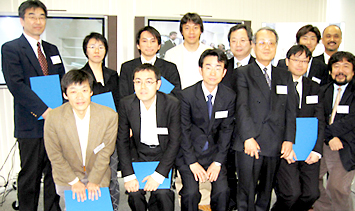Overview of the Major Events for GSIS Students
1. Admission
Information on admission procedures and the relevant forms are included with your letter of acceptance. Successful applicants should submit their admission forms and make the first tuition payment before orientation.
2. Orientation
Orientation is carried out through our e-learning system. After making self-introductions to their professors and colleagues and setting up their PC, new students begin preparation for enrollment using e-learning. Here new students will also plan their learning schedule for the next two years while receiving advice from professors and upperclassmen.
3. Entrance ceremony
New students can participate in the general entrance ceremony of Kumamoto University. After that, a separate entrance ceremony specifically for the Graduate School of Instructional Systems is also held simultaneously in Tokyo and Kumamoto. At this entrance ceremony, students receive identification and login information required to access the e-learning courses. As this ceremony is a rare opportunity to actually meet the professors and other students of the program, attendance is highly recommended.
4. Registration and Start of Courses
Students register and begin their e-learning courses using the online system of Kumamoto University. Course registration and e-learning study can be done remotely; enrolled students are not required to travel to Kumamoto.
5. Remote e-Learning
Students study all of their program courses using e-learning at times and in places of their own choosing. The teaching materials combine various educational content, such as printed textbooks, VOD, and online quizzes. In addition, discussions are held on message boards for almost all courses. Course completion and credit acquisition typically requires the passing of around 15 tasks (small assignments) and three to five larger assignments.
6. On-Site Intensive Learning
Some courses also include classroom lectures for intensive learning. Students can attend these lectures in either Tokyo or Kumamoto, as convenient for them. Attendance is encouraged but not mandatory; if a student needs to miss a lecture for an unavoidable reason, e.g., it conflicts with their work schedule, the lecture will also be distributed as a VOD at a later date, and that student can view it to make up for their absence.
7. Seminar and Research guidance
During their second year, each student is assigned a professor to help guide them in their research and provide personalized instruction.
In general, remote instruction is provided through the e-learning system, but e-mail and instant messaging, etc., can also be used. Of course, students and professions can also coordinate their time and travel schedules to arrange for face-to-face instruction.
8. Final Research Presentation and Defense
Research presentations are held on site at Kumamoto University. Previous graduates’ research topics and presentations can be viewed on the “Research” page.
9. Students who have completed their chosen program of study and satisfied all the relevant requirements receive a either master’s degree or a Ph.D. in Instructional Systems.
10. Graduates transition into an active life as a highly educated professional in the field of e-learning development.
As professionals in e-learning, we hope that all of our graduates will be involved in company-internal education/training, e-learning companies working in the private sector, or educational assistance/distance learning departments at higher education institutions. Alternatively, students may elect to advance to the doctoral program and aim to become a university professor or researcher, or a researcher at a research institute. We will continue to update this site to introduce the many varieties of active roles played by our graduated students.




